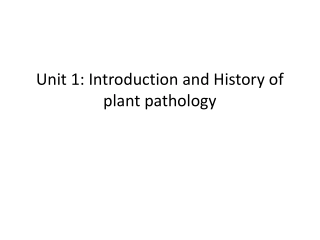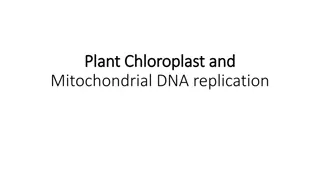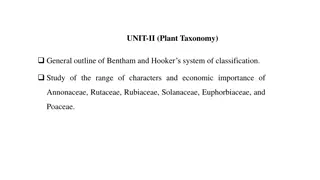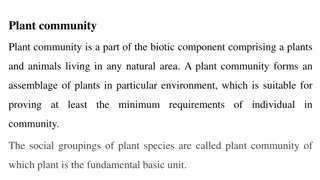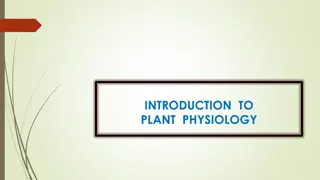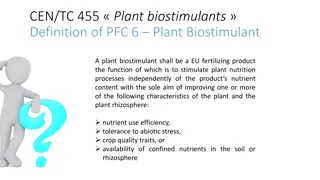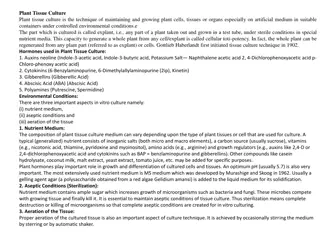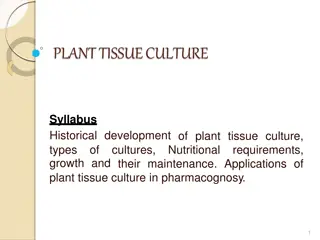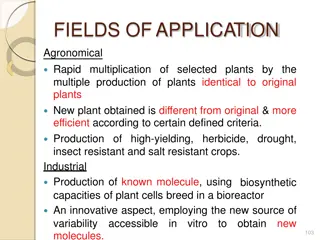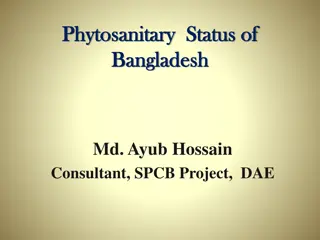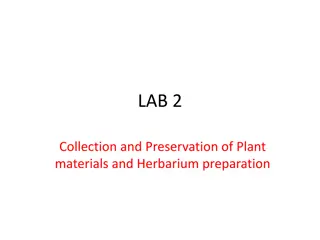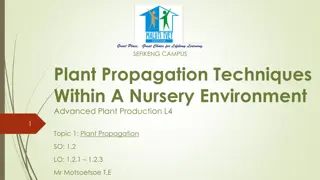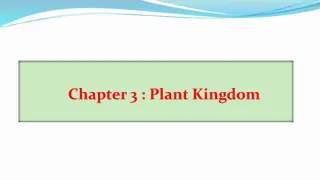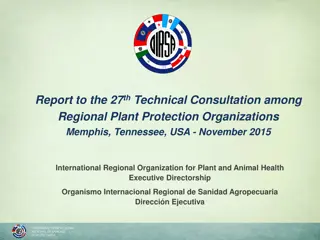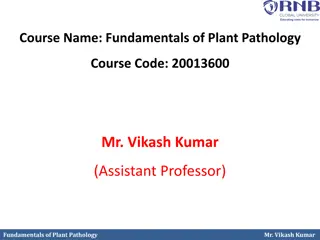
Understanding Plant Communities and Ecological Dynamics
Explore the concept of plant community as a naturally occurring group of plant and animal populations in a shared environment. Learn about qualitative and quantitative characteristics, ecotones, edge effects, and plant succession, highlighting the dynamic interactions within ecosystems. Dive into the intricate relationships between flora and fauna, density, cover, abundance, and more to grasp the complexity of plant communities and their significance in ecology.
Download Presentation

Please find below an Image/Link to download the presentation.
The content on the website is provided AS IS for your information and personal use only. It may not be sold, licensed, or shared on other websites without obtaining consent from the author. If you encounter any issues during the download, it is possible that the publisher has removed the file from their server.
You are allowed to download the files provided on this website for personal or commercial use, subject to the condition that they are used lawfully. All files are the property of their respective owners.
The content on the website is provided AS IS for your information and personal use only. It may not be sold, licensed, or shared on other websites without obtaining consent from the author.
E N D
Presentation Transcript
Definition: A naturally occurring group of different plant and animal populations living in a common environment constitute community.Assemblage of plant population in a biotic community is called plant community. It is a basic unit of vegetation. a biotic
Qualitative Characters 1.Floristic composition:Study of composition in terms of species(flora) present in a particular region. 2.Stratification: Arrangement of plants in different stratas 3.Periodicity: recurrence of various life processes. 4.Vitality and vigour: Vitality is ability of plant species to complete its life cycle in the prevailing conditions of community and vigour is state of health of plant species. 4.Growth forms: General morphology and visible appearance of plant. 5.Life forms: Vegetative appearance of plants. 6.Dispersion and sociability: Dispersion is method of distribution of plants in an area and sociability is nature of association if individuals of different species.
Quantitative characters 1.Density: Numerical strength of species per unt area of space.It is of two types: Crude density and ecological density. Density=No.of individuals of a species/Area sampled. 2.Cover: expression of the percentage of the ground covered or occupied by the species.It is of two types: crown cover and basal cover. 3.Abundance: number of individuals of a species present in the unit area.Abundance of species=No. of individuals in all samples/No.of samples in which species occurred. 4.Frequency: degree of dispersion of individual species in the given area.Frequency= Total no. of quadrates in which the species occur/Total no. of quadrates studied, multiplied by 100 5.Important value index: The overall view of the ecological importance of a species in relation to community.For this purpose frequency,relative density and relative dominance are added together. The total value out of 300 is called Important value index. the percentage value of relative
Ecotone and Edge effect 1.Ecotone is an intermediate zone of vegetation in between two distinct types of communities or biomes. 2.It is a place where two ecologies are in tension so it is also known as tension zone. 3.Influence of two different environmental pattern work together so vegetation is specialized. 4.Density of organisms and variety is enhanced than adjacent communities so increase in biodiversity is called edge effect.
Plant Succession Occurrence of gradual replacement of one community by another in a definite sequence over a period of time in the same area is known as plant succession. Causes of Succession: 1. Initial causes: which produce bare area or destroy the existing populations in an area. 2. Ecesis: Continuing causes such as migration, ecesis, aggregation, competition and reaction 3. Stabilising causes: Stabilisation of the community resulting in change of climate.
Basic Types of Succession A. On the basis of nature of bare area being colonized: 1. Primary Succession 2. Secondary Succession B. On the basis of type of medium or substratum where succession takes place: 1. Hydrosere 2. Halosere 3. Xerosere: a) Psamosere b) Lithosere
C. On the basis of successive changes in nutritional and energy content : 1. Autotrophic Succession 2. Heterotrophic Succession D. Method of replacement of one community by another: 1. Autogenic Succession 2. Allogenic succession

